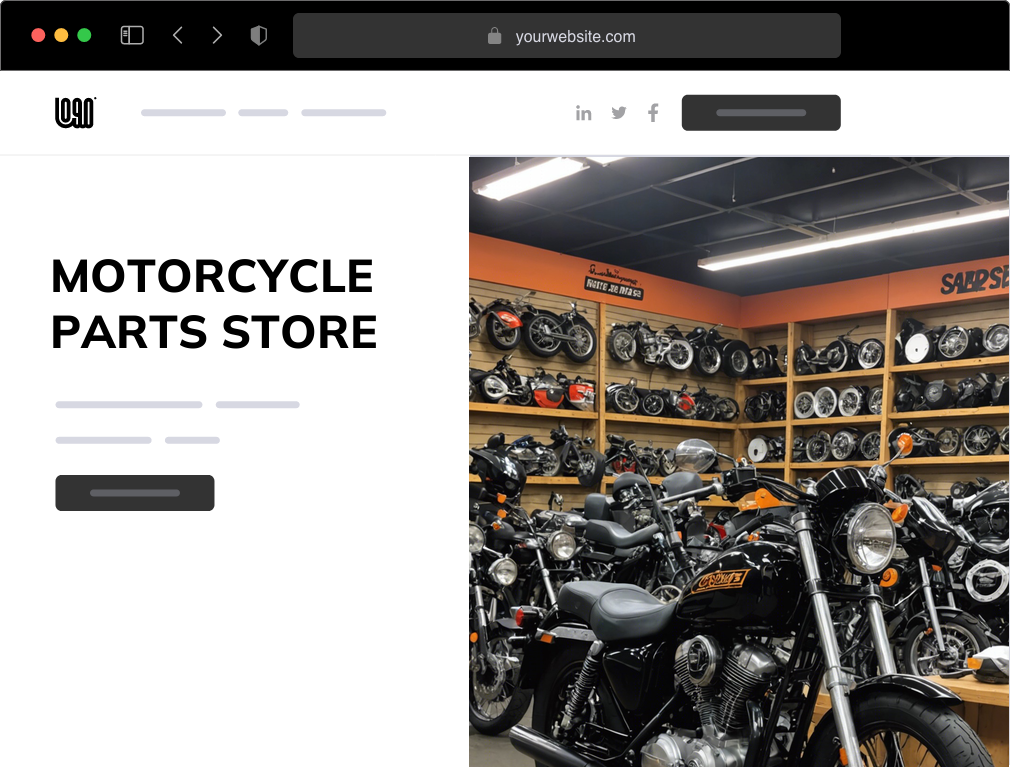Grasping Motorcycle Gears: Just How to Enhance Your Riding Experience
In the realm of motorcycling, understanding the art of equipment adjustment is important for enhancing your riding efficiency. Correctly understanding and using bike equipments can dramatically affect fuel, control, and acceleration effectiveness, transforming a typical experience into a seamless, thrilling journey. By incorporating specific shift timing and adjusting gear option to various roadway problems, motorcyclists can guarantee optimum engine efficiency and security. The subtleties of clutch control, throttle sychronisation, and equipment technicians bid a deeper expedition, promising to open the full potential of your machine. How can these methods be harnessed to truly optimize your riding experience?
Recognizing Gear Mechanics
At the core of motorbike characteristics, gear technicians play a crucial duty in converting engine power into activity, inevitably dictating rate and control. The equipment proportions, very carefully designed, determine the connection in between engine transformations and wheel turns, influencing velocity and gas performance.
Understanding equipment mechanics begins with identifying the importance of the transmission, which houses numerous gears of differing dimensions. These gears communicate with a procedure recognized as meshing, where teeth of different equipments engage to transmit power. The precision of this interaction is vital; any kind of imbalance or damage can bring about ineffective power transfer, impeding efficiency. Furthermore, the plan and size of gears affect the motorcycle's capacity to handle different tons and speeds.
Moreover, the concept of equipment moving is integral to optimizing performance. Timely and smooth shifts make certain that the engine runs within its optimal power band, preventing unnecessary pressure and boosting long life (motocross gear). By understanding these mechanical intricacies, riders can attain an unified mix of control, power, and performance, raising their riding experience
Timing Your Changes
Shift timing proficiency is important for optimizing bike performance and boosting the riding experience. Properly timed shifts ensure that the engine runs within its optimal power band, which is vital for maintaining control, accomplishing smooth acceleration, and ensuring the long life of the motorbike. Motorcyclists need to establish an instinctive feeling of when to move gears, which entails recognizing the connection in between engine transformations per minute (RPM) and rate.
To master shift timing, pay very close attention to the engine's noise and feel, as these offer important clues about when to transform gears. When the engine approaches the top variety of its power band without reaching the redline, the excellent shift point typically happens - mx parts nz. Shifting prematurely can result in a lack of power, while shifting too late might cause unneeded engine stress
Additionally, roadway problems and riding style impact shift timing. In city settings, smoother and a lot more frequent changes might be necessary to browse traffic successfully. In comparison, throughout highway riding, fewer shifts at higher rates can be better. Exercising in diverse settings will boost your ability to time changes precisely, inevitably boosting your riding experience to a professional level.
Enhancing Fuel Performance
While mastering bike equipments is essential for efficiency, enhancing gas efficiency is similarly important for both financial and ecological reasons. Optimum gas usage not only lowers operational prices but additionally lessens the ecological footprint of riding. To achieve this, one have to understand the detailed connection in between gear choice and engine performance.
Firstly, picking the ideal gear at suitable rates can substantially influence fuel usage. Riding in a greater equipment at lower speeds can result in engine carrying, which is damaging to both fuel economic climate and engine health and wellness. Alternatively, riding in lower gears at high speeds results in unneeded gas consumption. Hence, keeping an optimum equilibrium by shifting gears abreast with road conditions and expected maneuvers is crucial.
In addition, routine maintenance plays a critical function in fuel performance. Making certain that the motorbike is well-tuned, with clean air filters and correctly blew up tires, can enhance the rules of aerodynamics and decrease gas waste. Taking on a riding design that embraces steady velocity and smooth slowdown can add to much better gas economic situation.

Strategies for Smooth Transitions
Attaining smooth gear shifts is essential to improving the riding experience and ensuring the durability of a motorbike's transmission system. Correct gear changing not only adds to a seamless adventure but also decreases deterioration on the mechanical elements. To understand the art of smooth changes, motorcyclists should concentrate on a couple of essential methods.

Second of all, clutch control plays a critical function. Engaging and disengaging the clutch efficiently needs technique. The clutch bar should be launched slowly, permitting for a seamless transfer of power from the engine to the wheels without creating a shock or abrupt activity.

Adjusting to Roadway Conditions
Browsing diverse road problems is a crucial ability for any type of motorcyclist aiming to preserve control and safety. Whether you're riding on wet surface areas, gravel roads, or browsing sharp turns, your capability to adapt your equipment usage and riding technique is extremely important. Understanding just how to adjust your gears appropriately can dramatically affect grip and security, ensuring a more secure trip.
On damp roadways, it is a good idea to maintain higher gears to lower torque and decrease wheel spin. This method helps keep hold on slippery surfaces, enabling smoother acceleration and deceleration. On the other hand, when riding on gravel or uneven surface, reduced equipments are more suitable. Lower gears offer better control and allow you click for more to react even more promptly to unexpected adjustments in the road surface.
Sharp contours demand precise gear administration to balance rate and control. Downshifting before going into a contour can help preserve energy while making sure the motorbike stays steady throughout the turn. Constant method in varied problems boosts your capability to react and forecast to adjustments in road structure and slope.
Conclusion
Understanding bike equipments substantially additional resources improves the riding experience by boosting gas, control, and velocity efficiency. A detailed understanding of gear technicians and accurate shift timing makes certain the engine runs within its ideal power band, while smooth changes with efficient clutch and throttle sychronisation increase convenience and performance. Adapting equipment selection to various roadway problems, such as using greater gears on damp surface areas and reduced gears on gravel, more boosts handling and safety and security. Eventually, these abilities elevate the general journey.
Understanding gear mechanics starts with recognizing the relevance of the gearbox, which houses numerous equipments of varying sizes. These equipments communicate through a procedure recognized as meshing, where teeth of various equipments engage to transfer power (mx parts nz). Gentle modifications to the throttle throughout equipment changes can avoid jerky motions and keep a consistent riding pace
Whether you're riding on wet surface areas, crushed rock roadways, or browsing sharp turns, your ability to adjust your equipment use and riding strategy is critical. Adapting gear selection to different road problems, such as using higher gears on wet surface areas and reduced equipments on crushed rock, more enhances handling and safety.